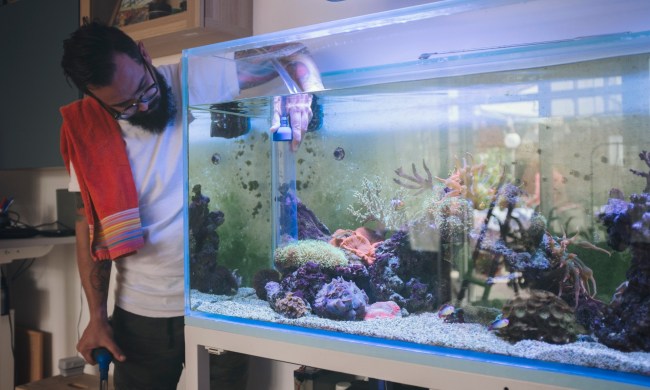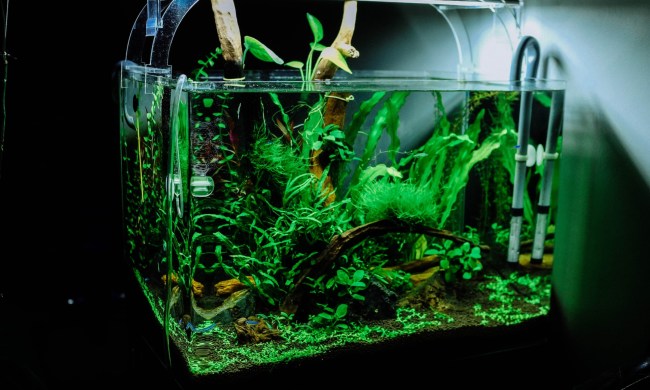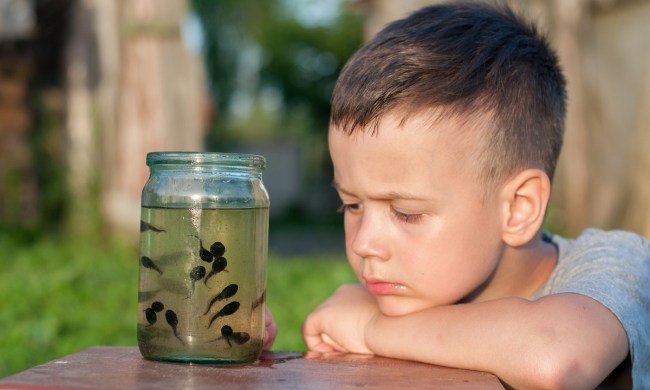You know intellectually that there’s bacteria everywhere around you, but it’s a different thing entirely to see it in your fish tank. Yup, bacteria looks gross and perhaps concerning (though you probably have nothing to worry about, since this is typically an easy fix). Still, you want to take care of the problem ASAP and get your tank back to picture-perfect clear water—both for you and for the inhabitants.
The first task is to confirm that a bacteria bloom is in fact what’s causing tank cloudiness. An algae bloom or a broken filter can also cause similar problems. Once you’re sure, you then need to find what caused the bacteria bloom in the first place. Whatever the reason, here’s how you can tackle bacteria and get your tank back in shape.
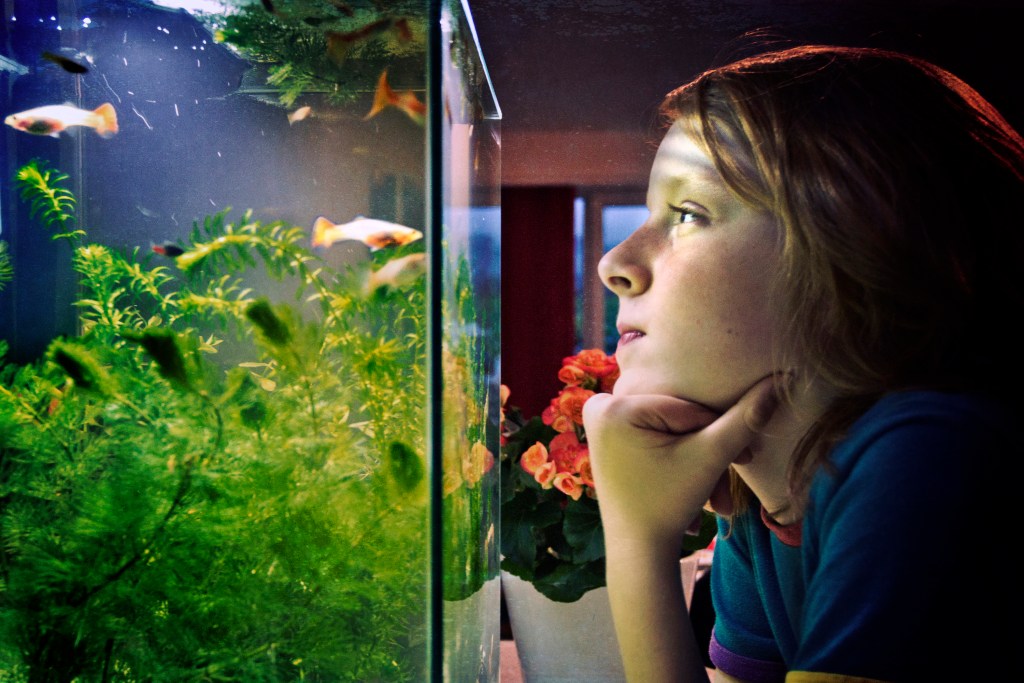
What is bacteria bloom?
It might seem like every time you think you’ve become a master aquarist, something new stumps you. Bacteria just might be that something. The nitty gritty of bacteria is actually highly technical and probably involves advanced chemistry (we’re just guessing), but basically, the stuff you see in your tank is likely heterotrophic bacteria. This microbe breaks down and eats the leftover food in your tank or other waste like dead plant leaves or even dead fish. That’s why it’s so important to get to the root of the cause instead of focusing on the pesky organisms themselves.
What is the nitrogen cycle?
When you first set up your tank, a bloom might be inevitable. That’s actually a good thing. The truth is, you need some bacteria in your tank for it to function properly. Just as your digestion requires good bacteria for your gut health, so too does your mini ecosystem require a process to keep it healthy. Enter bacteria, specifically the nitrogen-eating kind. It all starts with ammonia, which is just another form of nitrogen. Ammonia comes from fish poop, respiration, dying plants, and excess decaying food. So it just happens in an aquarium. The first bacteria therefore turn the ammonia into nitrites. Then it switches into nitrates through another bacteria—the most preferable form. While all this is happening, you should see some blooms as each group works to stabilize the environment.
How do you fix bacteria bloom?
If you have just set up your tank and you’re expecting the cloudiness, you’ll mostly want to wait it out. One way to mitigate the issue is to hold off on adding any fish and start with plants or really hardy animals while the tank finds its equilibrium. Keep in mind, these little bacteria use up a lot of oxygen, so make sure you’re aerating the tank extra well during this time.
When the blossom happens unexpectedly, you need to get to the source. It could be overfeeding, a dead fish or plant, an insufficient filter, an overcrowded tank, or even the source water itself. Try to isolate and eliminate each of these possibilities. You can also look into adding activated carbon to your filter, but that won’t really get it done if the problem stays around.
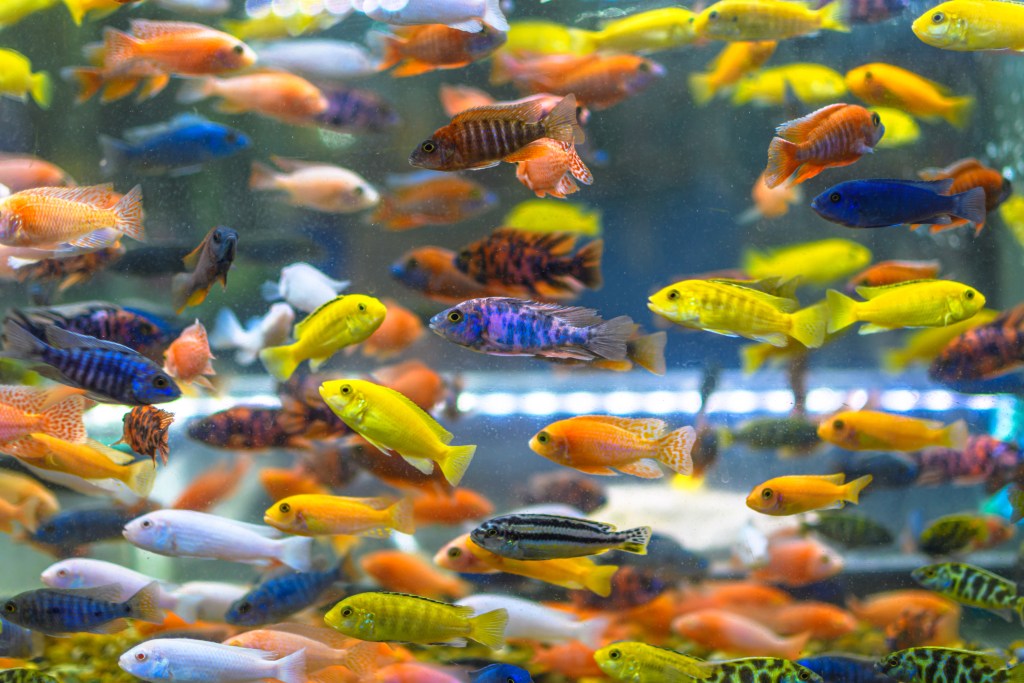
How long does bacteria bloom last?
It takes about six weeks for the initial nitrogen cycle to complete and for the aquarium levels to normalize. Take regular measurements every day or every few days during this time and watch for progress. Only include as few fish as possible to keep the bloom at bay, and stay really conscientious about not feeding too much. You won’t see visible bacteria this whole time either, but that doesn’t mean you’ve gotten there—rely on testing as your primary indicator.
If you notice an unusual bloom that’s not just from first setting up your tank, you won’t solve the problem until you tackle the underlying issue. Once you address the likely source or sources of the bloom, wait ten days. If the bloom is still present, consult an aquarium specialist.
When it comes down to it, you want to be careful but not too worried about bacteria. It’s absolutely true that issues with your tank can be fatal to fish and are not to be taken lightly, but some bacteria are necessary to maintain your aquarium and keep the nitrogen cycle running smoothly. Carefully monitor your fish tank with regular testing and water changes, and act quickly if fish look sick or die unexpectedly. Though we hope things never come to that, such indicators will point you toward problems in the tank and help you locate the source. Once you’ve sat through a few normal blooms, you’ll know what to look for next time and when to worry.

